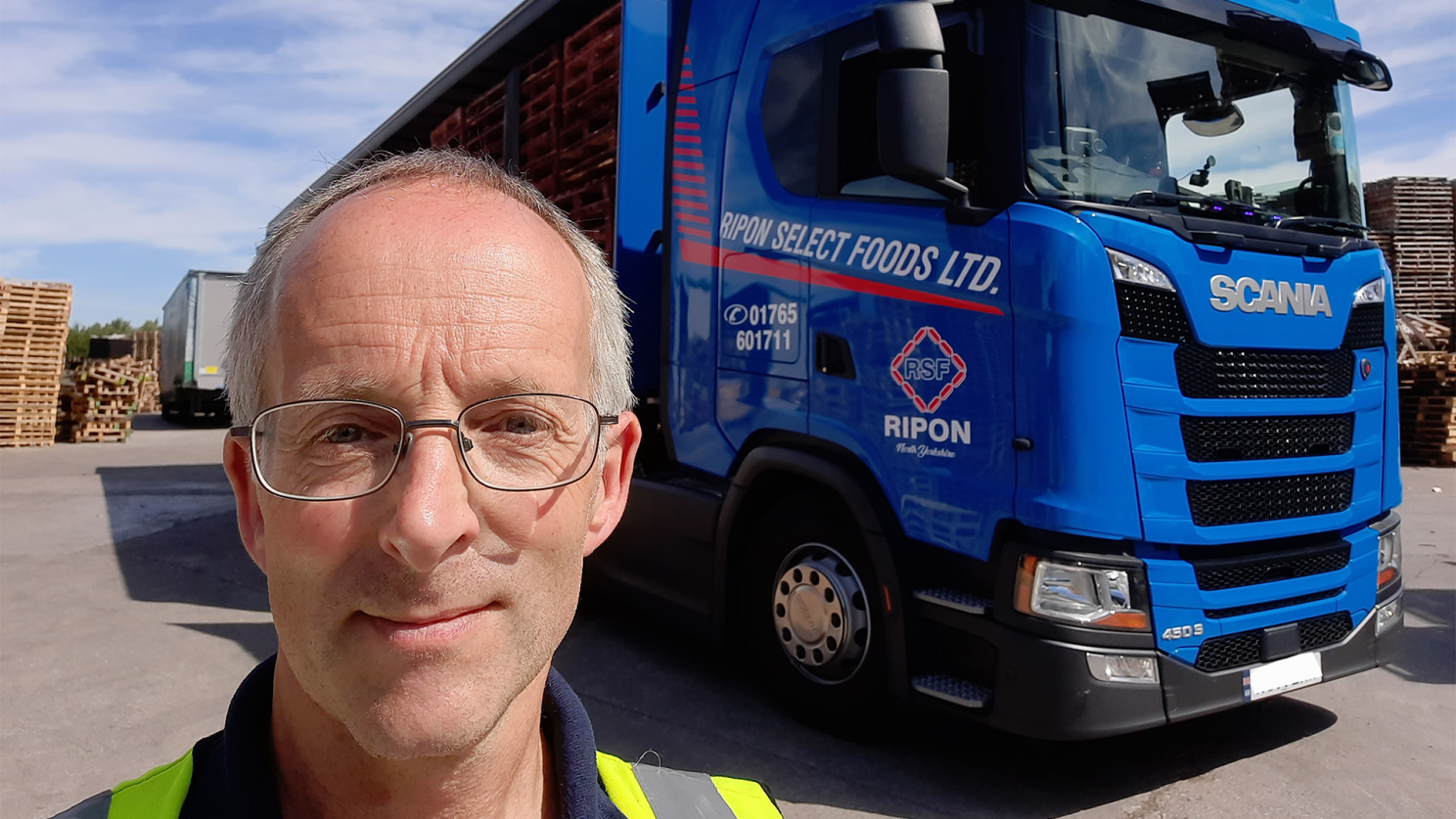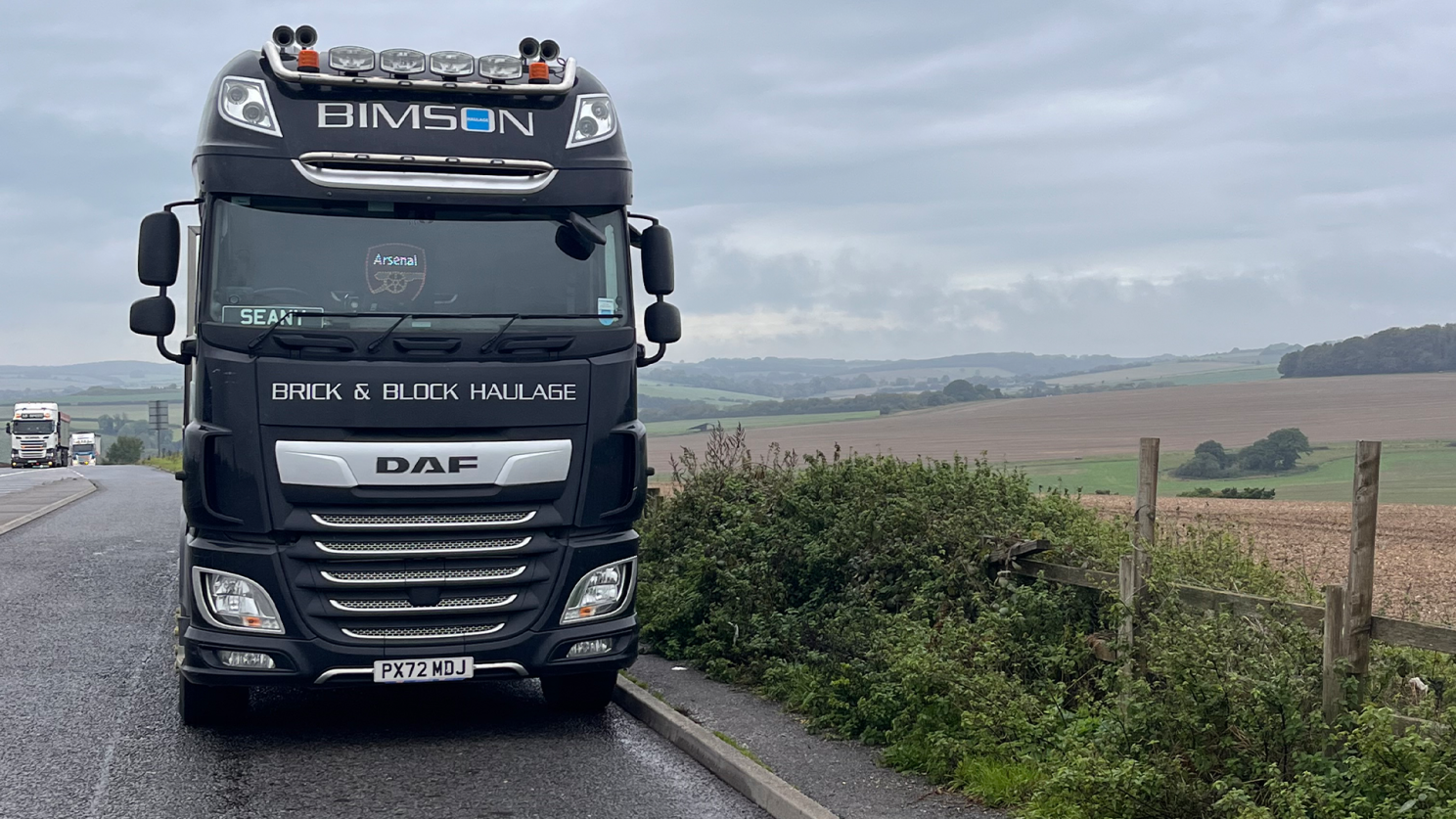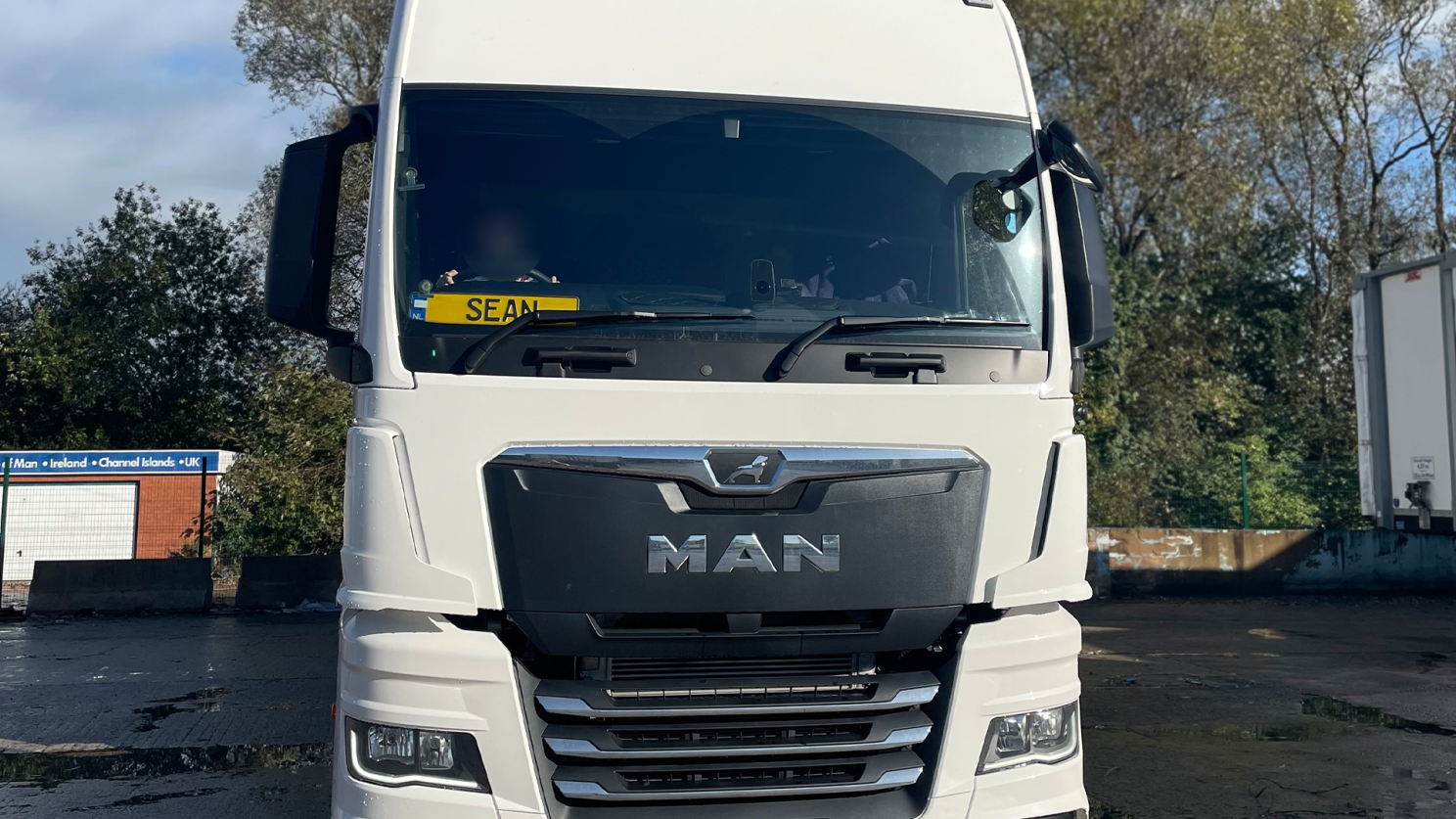
Susie Jones
Povești de camionagiu: povești de pe șosea
Creat: 22.08.2024
•
Actualizat: 22.08.2024
Dorim să punem în lumină comunitatea camioanelor și să cunoaștem oamenii din spatele volanului.
De la elicoptere care aterizează în fața camioanelor lor la mașini care circulă pe partea greșită a autostrăzii, aflați mai multe despre șoferii care vă livrează mărfurile.
Alan
Alan conduce de 23 de ani și a decis să se alăture industriei după ce a ascultat melodiile lui Ally Thomson despre condusul camioanelor. Când a fost întrebat ce îi place cel mai mult la această meserie, el a declarat că este "singurătatea pe care o aduce șofatul de camion - există o separare completă de viața de acasă".
Camioanele Volvo sunt preferatele lui, deoarece el călătorește prin Marea Britanie transportând bunuri Amazon. El spune că a transportat o mulțime de produse interesante, "alegerea este nelimitată - gândiți-vă doar la orice vinde Amazon".
Pentru șoferii care parchează peste noapte, este dificil să se distreze în timpul liber. Cu toate acestea, șoferii experimentați precum Alan și-au făcut rutina de seară la fix. El afirmă că "îi place să se uite la Sky TV prin iPad" atunci când parchează pentru noapte.

Pentru șoferii care se străduiesc să se distreze la volan, am întocmit o listă cu modalități de a preveni plictiseala.
În timp ce orele lungi pe drum pot părea monotone pentru mulți, Alan explică faptul că există întotdeauna ceva care îl ține în priză.
"Cred că cel mai nebunesc lucru pe care l-am văzut în timp ce conduceam a fost un elicopter care ateriza chiar în fața mea", explică el - departe de reputația monotonă care a învăluit industria timp de decenii.
Cu 23 de ani în această industrie în spate, Alan a oferit câteva sfaturi care vă vor păstra albul perlat proaspăt în călătoriile dumneavoastră.
El explică: "Sfatul pe care l-aș da oricui este să nu uite niciodată să țină periuța de dinți încărcată."
Richard
Acum 36 de ani, Richard și-a început cariera în industria transporturilor și nu a privit niciodată înapoi. A prins gustul șofatului atunci când s-a alăturat celor doi frați mai mari ai săi pentru a ajuta la livrarea de mărfuri în Regatul Unit.
"Îmi place să iau o încărcătură și să pornesc la drum. Eu decid când iau o pauză și unde parchez. Să fii pe drum și să călătorești prin toată Marea Britanie este minunat", explică el.
Pe parcursul carierei sale, viața pe șosea l-a dus până la Milano, Italia - o călătorie istovitoare chiar și pentru cei mai experimentați șoferi. Întrebat cum se distrează în timpul călătoriilor, acesta a declarat: "Îmi place să ascult muzică și să mă uit la filme în timpul liber."

Cel mai bun camion pentru a face acest lucru? "Trebuie să fie un Scania Next Generation 450S", spune el.
Pentru Richard, cei 30 de ani în industrie nu au fost lipsiți de povești nebunești și livrări neobișnuite: "Am văzut o mașină care mergea pe contrasens pe autostradă, ieșind de pe o bretea. Cel mai interesant lucru pe care l-am avut în spatele camionului a fost un car alegoric pentru parada de Ziua Sfântului Wilfred."
Deși încă iubește drumurile deschise, Richard afirmă că acestea au uneori un preț. El oferă o perspectivă excelentă asupra realității acestei profesii și sfaturi pentru cei care doresc să se alăture industriei.
"Gândiți-vă foarte bine dacă aceasta este cariera potrivită pentru dumneavoastră. Așteptați-vă la multe ore de lucru și la pierderea unei părți importante din viața de familie."
Sean
Crescând într-o familie de șoferi, Sean avea camioanele în sânge, iar acum 20 de ani s-a urcat la volan și și-a continuat cariera în industria transporturilor.
Slujba vine cu multe avantaje, dar pentru Sean, libertatea pe care o oferă este ceea ce iubește cel mai mult. Această libertate l-a dus până în Scoția pentru un serviciu de șase săptămâni. În aceste călătorii lungi, sunatul prietenilor și privitul la televizor sunt sursa sa de divertisment.

În plus, stațiile de camioane au jucat un rol esențial pentru Sean în combaterea izolării pe care o aduce șofatul. Deseori un focar de activitate, stațiile de camioane îi permit lui Sean să se întâlnească cu prietenii în timpul călătoriilor sale.
Aceste opriri la boxe reprezintă ocazia perfectă de a auzi povești nebunești de la alți șoferi de camion. La fel ca Richard, cel mai ciudat lucru pe care Sean l-a văzut în călătoriile sale a fost "o mașină care mergea pe contrasens pe o autostradă pe întuneric" - o poveste mult prea frecventă în rândul comunității camioanelor.
Un DAF XF 530 este camionul ales de Sean pentru transportul materialelor de construcție în Marea Britanie. El îi sfătuiește pe toți cei care doresc o carieră în domeniul autocamioanelor "să o facă!"
Dave
Dave conduce camioane de 30 de ani și a călătorit până în Danemarca și Spania. Când nu călătorește în camionul său preferat, un Volvo FH, îi place să se uite la telenovele în confortul cabinei sale.
"Comportamentul unor șoferi de mașini mi-a oferit câteva povești nebunești de spus", explică el. Cu toate acestea, când l-am întrebat pe Dave care este cel mai interesant lucru pe care l-a avut în spatele camionului său, acesta a rămas tăcut - "este top secret", afirmă el.
După 30 de ani de transport de mărfuri, Dave a învățat câteva lucruri despre lumea transporturilor. El oferă un sfat bun celor care doresc să își înceapă cariera în industrie - "asigurați-vă că vă specializați în ceva".
Alastair
Relativ nou în industrie, Alastair a decis să urmeze o carieră în conducerea camioanelor pentru a se menține ocupat după pensionare. Cu cinci ani la activ, îi place varietatea profesiei mai mult decât orice altceva.
În acest timp, Alastair a avut ocazia să călătorească prin Marea Britanie și Europa: "Am călătorit în Inverness, Copenhaga, Lisabona, Budapesta și Roma", afirmă el.
Pentru a preveni plictiseala, lui Alastair îi place să asculte "Radio 4, LBC și 5 Live".
Călătorind prin Europa, el a fost martorul unor comportamente neobișnuite din partea altor participanți la trafic. Cu toate acestea, a fost mai aproape de casă când a trebuit să își manevreze camionul prin "demonstrațiile din Londra. A fost probabil cel mai nebunesc lucru pe care l-am trăit", explică el.
Pentru fanii 007, Alastair împărtășește momentul în care a trebuit să transporte niște obiecte strict secrete.
"Cel mai interesant obiect pe care l-am avut în partea din spate a camionului ar fi, probabil, obiectele de expoziție James Bond", afirmă el.
Deși Alastair nu se află de mult timp în această industrie, are câteva cuvinte pentru cei noi în domeniu.
"Un sfat pe care l-aș da cuiva care se gândește să intre în lumea transportului este să rămână calm."
Sean V
Dragostea lui Sean pentru șosea provine din multe vacanțe de vară petrecute cu tatăl său, călătorind cu camionul său. După 30 de ani de șofat, dragostea lui pentru șofat continuă să crească puternic.
"Ceea ce îmi place la această slujbă este să văd toate locurile frumoase din Marea Britanie și Europa", explică el. Este o slujbă care l-a dus în diverse destinații - Roma fiind cea mai îndepărtată pe care a călătorit.
Atunci când nu explorează orașele, lui Sean îi place să se distreze uitându-se la televizor, folosindu-și iPad-ul și, până de curând, să joace în confortul propriului taxi.

Cel mai nebunesc lucru la care a asistat pe drum?
Din nefericire, Sean este și el martor la o priveliște mult prea comună în rândul șoferilor de camioane - "o mașină care circulă pe contrasens pe autostradă", explică el.
În cei 30 de ani de carieră ai lui Sean, acesta afirmă că camioanele DAF au fost preferatele sale, iar cel mai interesant obiect pe care l-a transportat a fost "echipamentul medical specializat".
Dragostea lui Sean pentru această industrie depășește unele dintre aspectele negative ale meseriei. Cu toate acestea, pentru cei care doresc să își înceapă cariera în industria de transport, Sean are aceste cuvinte înțelepte pentru ei:
"Dacă vă gândiți să vă alăturați acestei industrii, așteptați-vă să lucrați multe ore."
Înscrieți-vă la SNAP astăzi
SNAP vă face viața mai ușoară conectându-vă la vasta noastră rețea de servicii de transport rutier. [Înscrieți-vă astăzi] (https://snapacc.com/sign-up/)



